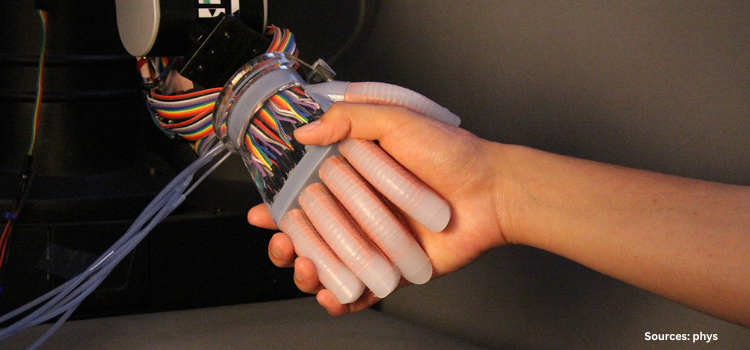North America Eye Tracking Market by Type (Head Mounted Eye Tracker and Remote Eye Tracker), by Component (Hardware and Software), by Application (Assistive Communication, Academic Research, Consumer Behavior Research, Usability Testing and Other Applications), and by End-User Industry (Retail, Automotive, Healthcare, Government and Others)- Opportunity Analysis and Industry Forecast, 2024– 2030
Industry: Semiconductor & Electronics | Publish Date: 02-Jan-2025 | No of Pages: 165 | No. of Tables: 121 | No. of Figures: 66 | Format: PDF | Report Code : SE2448
US Tariff Impact on North America Eye Tracking Market
Trump Tariffs Are Reshaping Global Business
North America Eye Tracking Market Overview
The North America Eye Tracking Market size was valued at USD 252.1 million in 2023, and is predicted to reach USD 1644.3 million by 2030, at a CAGR of 29.5% from 2024 to 2030. The North America eye tracking market is a comprehensive ecosystem of products, services, and technologies designed to measure and analyze eye movements, gaze direction, and fixation points. This market includes specialized hardware such as cameras, sensors, and light sources, as well as software solutions for data processing and analysis.
Eye tracking also known as eye monitoring systems are applied across various industries such as psychology, market research, user experience testing, and human-computer interaction to provide insights into consumer behavior, visual perception, and interface usability. In the contemporary landscape of user experience and human-computer interaction, eye tracking emerges as an indispensable tool, offering invaluable insights into user engagement and interface usability. By meticulously scrutinizing how users navigate digital interfaces and websites, designers can discern pain points, optimize layouts, and refine interactions to foster seamless user experiences.
Rising Incidence of Mental Disorders Propels the Demand for Eye Tracking Technology
The surge in cases of mental disorders within North America serves as a significant factor for the expanding adoption of eye tracking technology. As conditions such as ADHD, ASD, and schizophrenia become more prevalent across the region, there's a growing demand for innovative diagnostic and therapeutic solutions.
Eye tracking systems offer a promising avenue for clinicians and researchers to delve deeper into understanding these disorders by providing precise insights into cognitive processes and visual behaviors. With their ability to objectively measure attention, gaze patterns, and fixation durations, eye tracking technologies aid in early detection, accurate diagnosis, and personalized treatment planning for individuals affected by mental health conditions.
Consequently, healthcare facilities, research institutions, and pharmaceutical companies are increasingly investing in eye tracking technology to enhance their capabilities in studying and addressing the complexities of mental disorders. This growing recognition of eye tracking's potential in mental health care fuels its integration into clinical practice, thus driving the expansion of the eye monitoring systems market in North America.
Integration of Eye Tracking Systems in the Automotive Industry Fuels Growth in the Market
The utilization of eye tracking systems within the automotive sector serves as a significant driver for the proliferation of eye tracking technology in North America. As the automotive industry evolves towards autonomous driving and enhanced safety features, eye tracking technology emerges as a critical component for improving driver monitoring and vehicle safety systems.
Eye tracking systems are instrumental in detecting driver fatigue, drowsiness, distraction, and overall attentiveness levels, thereby mitigating the risks associated with driver errors and accidents. By integrating eye tracking technology into advanced driver assistance systems (ADAS), automotive manufacturers can enhance vehicle safety measures and ensure a more vigilant and responsive driving experience.
Additionally, eye tracking systems facilitate the development of intuitive human-machine interfaces (HMI) within vehicles, enabling seamless interaction between drivers and onboard systems, driving the of the North America demand in North America.
Proliferation of Alternative Technologies Hinders Market Expansion
The proliferation of alternative technologies, including gesture recognition, unimodal methods, and multimodal activity recognition, emerges as a significant restraint on the growth of the North America eye tracking market. Gesture recognition, for instance, employs mathematical algorithms to interpret human gestures, enabling device control through simple movements. This technology is particularly adept at recognizing emotions conveyed through facial expressions, hand gestures, and body language.
In sectors such as consumer electronics and gaming, where the ability to predict user behavior is paramount, these alternative technologies offer valuable insights that extend beyond the capabilities of traditional eye tracking market. Consequently, the availability and adoption of such alternatives hinder the market's growth potential by providing competitive solutions that cater to diverse user needs and preferences.
Integration of AR and VR in Eye Tracking Technology Create Future Market Prospects
The swift integration of eye-tracking technology across various sectors, including augmented reality (AR), virtual reality (VR), lie-detection systems, and cognitive testing, is poised to unlock significant opportunities within the North America eye tracking market.
This technology plays a crucial role in enhancing image clarity and reducing eye strain in AR and VR applications, thereby elevating user engagement and comfort levels. This technology benefits from natural stimuli and controlled data collection, making it a dynamic field driven by startups and investments from tech giants such as Apple, Google, Facebook, and Samsung.
For instance, in March 2022, Mojo Vision announced a new advanced prototype of its AR smart contact lens Mojo Lens. The prototype includes various new hardware features and advanced technologies such as advanced display, communications, eye tracking technology, and a power system embedded into the lens. It allows users to access timely information quickly and discreetly without forcing them to look down at a screen.
U.S Dominates the North America Eye Tracking Market Share
The U.S. stands as the leading force in the North America eye tracking market, driven notably by its robust presence in the IT sector and the burgeoning adoption of eye tracking technology within healthcare applications. A noteworthy example of this momentum is Amazon's pioneering introduction of the "Eye Gaze" feature for its Alexa platform in September 2023.
This innovative feature enables users to control the Fire Max 11 tablet through intuitive eye movements, representing a significant leap forward in accessibility and convenience, particularly for individuals with physical disabilities. By embracing eye tracking technology, Amazon underscores its commitment to inclusivity and user-centric design, marking a pivotal advancement in the evolution of the market.
This strategic integration of eye tracking capabilities into consumer devices not only enhances usability but also heralds a new era of innovation and accessibility within the technology landscape. The surge in the utilization of eye tracking systems within the automotive industry is playing a pivotal role in driving the eye monitoring systems market growth in this region.
An illustrative example of this trend occurred in February 2023 when Smart Eye, renowned for its Driver Monitoring System (DMS) software tailored for automotive applications, clinched a ground breaking order in collaboration with a prominent global Tier 1 supplier.
This significant order emanated from a heavy vehicle OEM specializing in the medium to heavy-duty segment, boasting a widespread global presence and headquartered in Europe. Notably, this OEM represents three distinguished brands.
This collaboration signifies a notable milestone in the market, underscoring the escalating adoption of DMS technology, particularly within the commercial vehicle sector. The partnership highlights the growing recognition among automotive manufacturers of the critical role played by eye tracking systems in enhancing driver safety and overall vehicle performance.
Canada to Witness Substantial Growth in the North America Eye Tracking Market
Canada holds the second position in the North America eye tracking market growth, driven by several factors. Firstly, there's a notable increase in investments in smart and wearable technology nationwide. Additionally, there's a growing demand for assistive communication devices, reflecting a commitment to accessibility. Moreover, the adoption of eye tracking technology in new areas such as lie-detection systems, the video gaming industry, and cognitive testing is expected to fuel market growth.
Furthermore, there's rising demand for eye-tracking systems in healthcare settings like hospitals and nursing homes, particularly for treating mental and neurological disorders. These factors collectively contribute to the expansion of the eye monitoring systems market in Canada, reflecting the country's embrace of innovation and commitment to improving accessibility and healthcare outcomes.
The existence of numerous eye tracking software companies such as Expoze Io, Loceye, Element Human, and Hawkeye fuels the North America eye tracking market expansion. These companies offer different solutions tailored to various industries and applications, contributing to market expansion.
Their presence encourages competition and innovation in eye tracking technology, making these systems more widely adopted across different sectors. Additionally, having multiple software providers gives consumers more options to choose from, ensuring they can find solutions that meet their specific needs. Overall, the presence of these eye tracking software companies significantly drives the growth of the eye monitoring systems market in this country.
Competitive Landscape
The key market players operating in the North America eye tracking industry include Tobii AB, Smart Eye AB, Lattice Semiconductor Corp, Ogilvy, Seeing Machines Limited, AVSimulation, Lumen, Eyetech Digital Systems, Inc., EyeTracking, Gazepoint, Eyegaze, Eyeware Tech, SR Research Ltd., Pupil Labs, and Irisbond Crowdbonding, S.L. and others.
North America Eye Tracking Market Key Segments
By Type
-
Head Mounted Eye Tracker
-
Remote Eye Tracker
By Component
-
Hardware
-
Software
By Application
-
Assistive Communication
-
Academic Research
-
Consumer Behavior Research
-
Usability Testing
-
Other Applications
By End-User Industry
-
Retail
-
Automotive
-
Healthcare
-
Government
-
Others
By Country
-
U.S.
-
Canada
-
Mexico
REPORT SCOPE AND SEGMENTATION:
|
Parameters |
Details |
|
Market Size in 2023 |
USD 252.1 Million |
|
Revenue Forecast in 2030 |
USD 1644.3 Million |
|
Growth Rate |
CAGR of 29.5% from 2024 to 2030 |
|
Analysis Period |
2023–2030 |
|
Base Year Considered |
2023 |
|
Forecast Period |
2024–2030 |
|
Market Size Estimation |
Million (USD) |
|
Growth Factors |
|
|
Countries Covered |
3 |
|
Companies Profiled |
15 |
|
Market Share |
Available for 15 companies |
|
Customization Scope |
|
|
Pricing and Purchase Options |
Avail customized purchase options to meet your exact research needs. |
|
Customization Scope |
Free customization (equivalent up to 80 working hours of analysts) after purchase. Addition or alteration to country, regional, and segment scope. |
|
Pricing and Purchase Options |
Avail customized purchase options to meet your exact research needs. |
KEY PLAYERS
-
Tobii AB
-
Smart Eye AB
-
Lattice Semiconductor Corp
-
Ogilvy
-
Seeing Machines Limited
-
AVSimulation
-
Lumen
-
Eyetech Digital Systems, Inc.
-
EyeTracking
-
Gazepoint
-
Eyegaze
-
Eyeware Tech
-
SR Research Ltd.
-
Pupil Labs
-
Irisbond Crowdbonding, S.L.














 Speak to Our Analyst
Speak to Our Analyst




















